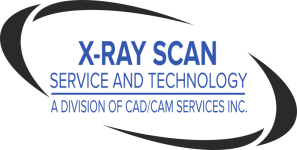X-Ray Film Scanners and Digitizers, X-Ray Film Scanning Services and Software
EMR Mandate Stage 2 and the Need for Scanning X-Ray Film
posted Jan-8-2015By now, we’re all familiar with President Obama’s Electronic Medical Records (EMR) Mandate.
Stage 1 of the mandate did not require medical images to be part of an EMR in order to meet meaningful use qualifications, and while Stage 2 includes it only as a menu option, It’s hard understand why any medical facility or healthcare provider would not want to include medical images as part of their EMR.
 When we discuss medical imaging with physicians, they are nearly unanimous in their opinions that medical imaging is not only prevalent in the patient care cycle, but also necessary to clinical diagnosis and treatment. Furthermore, they tend to agree that the lack of access to imaging studies in the EMR often means that diagnostic imaging is repeated, exposing patients to unnecessary doses of radiation, increasing patient care costs and extending treatment times, and sometimes even delaying referral processes.
When we discuss medical imaging with physicians, they are nearly unanimous in their opinions that medical imaging is not only prevalent in the patient care cycle, but also necessary to clinical diagnosis and treatment. Furthermore, they tend to agree that the lack of access to imaging studies in the EMR often means that diagnostic imaging is repeated, exposing patients to unnecessary doses of radiation, increasing patient care costs and extending treatment times, and sometimes even delaying referral processes.
The problem is that many healthcare professionals are uncertain just how to add medical imaging to their EMRs, especially when they still have archives of X-ray film. In the past there has been no easy way to access to images through the EMR without expensive upgrade or whole sale system replacements. For efficiency reasons many medical professionals are not willing to learn another system just to add diagnostic imaging study viewing. They want a way to access these images seamlessly right within the EMR system that they already use. Since, 90% of EMR software does not offer access to diagnostic imaging studies, this has presented a dilemma, and most X-ray film has simply stayed archived in physical storage locations.
Today, the best way to solve the problem is by making use of an X-ray scanning service that also offers a linkable cloud computing module that enables EMR software to bring full DICOM imaging right into the EMR with one login to the EMR software and a zero-footprint viewer. This method eliminates the need to buy additional hardware or install additional software. It doesn’t require a new learning curve, and no user setups, so support requirements are minimal.
With professional scanning and the right cloud imaging solution for the EMR, all images can be stored and archived in the cloud and made available with a simple pull-down menu within your current EMR. Make sure that the cloud solution you chose meets all HIPPA-required compliances, so patients’ privacy is assured and security is provided.
When asked, most treating doctors want to see the actual image, in addition to reading the radiologist’s report. So, even with the latest EMR system, the doctor is still going to need to see the X-ray, or view a DICOM image, whether or not he has a PACs machine on which to view it. Thinking about this issue before the medical facility moves to electronic medical records can streamline the process of converting to EMR, and add to the ROI of the conversion. A well done EMR implementation should include imaging provisions.

